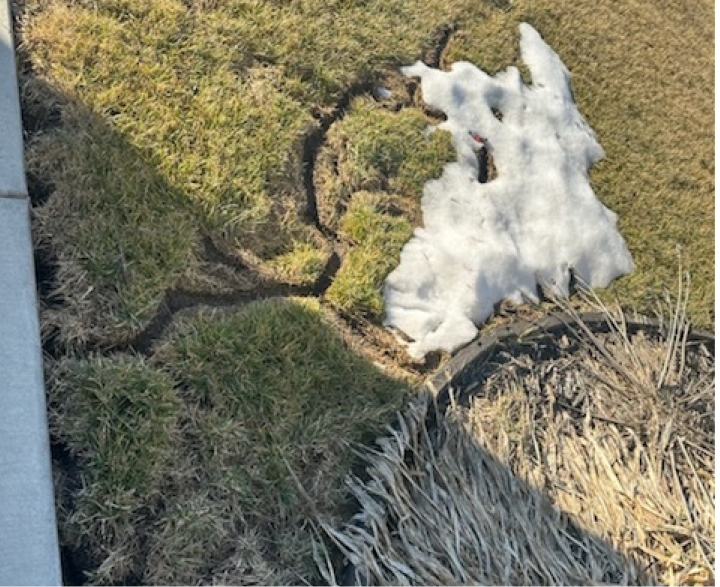Recover Your Lawn's Health and wellness: Aggressive Vole Insect Control
Wiki Article
Understanding Vole Bug Control: In-depth Insights on Invasion Avoidance and Therapy Strategies
By recognizing the refined indications of vole problem early on, we can take positive steps to stop extensive damage. In this conversation, we will certainly discover the subtleties of vole behavior, delve into the identification of invasion signs, and uncover the most efficient avoidance and treatment techniques.Comprehending Vole Actions
Taking a look at the foraging patterns of voles supplies important understandings into their actions and habitat preferences. Voles, small rodents resembling computer mice, are herbivores recognized for their underground tunneling tasks. By observing their foraging behavior, researchers can acquire a much better understanding of where voles like to establish their habitats and the degree of their ecological impact. Voles are respected breeders, with a solitary women capable of generating a number of clutters in a year, making it crucial to understand their behavior for reliable parasite control strategies.
Research study indicates that voles exhibit careful feeding behaviors, choosing bulbs, origins, and seeds - vole control utah. This nutritional preference affects their foraging patterns, leading them to areas abundant in plant life and ground cover. Additionally, voles are recognized to develop sophisticated passage systems for foraging and nesting functions, showing a high level of versatility to their surroundings
Recognizing vole actions is important for implementing targeted bug control actions that disrupt their environment choices and foraging activities. By examining their habits, professionals can establish more effective prevention and treatment approaches to take care of vole infestations.
Identifying Signs of Vole Invasion
Vole invasions can be detected by acknowledging specific indications of their presence in a location (vole pest control). One of the most typical indications of a vole invasion is the presence of surface runways.Another key indicator of vole problem is the visibility of little burrow openings in the ground. Additionally, voles are understood to leave behind chewed plant stems, roots, and bulbs near their burrow openings, suggesting their feeding activity in the area.
Moreover, vole droppings can also signify their existence (vole lawn damage). Vole droppings are tiny, brownish, and round in form, appearing like grains of rice. Finding these droppings along runways or near burrow openings can confirm a vole infestation. By being alert for these indicators, residential or commercial property proprietors can quickly address vole invasions and stop further damages.
Executing Positive Avoidance Procedures
To properly alleviate the risks connected with vole invasions, home proprietors can proactively apply a variety of preventive procedures intended at guarding their gardens and landscapes. Additionally, keeping yard areas clean and reducing clutter where voles can hide or nest is important in reducing their presence.Moreover, utilizing natural vole deterrents like castor oil-based repellents or predator urine can serve as efficient precautionary steps. It is also recommended to on a regular basis examine outside rooms for any type of indicators of vole task, such as runways or delve openings, to resolve prospective invasions without delay. By adopting these positive prevention methods, building proprietors can dramatically lower the chance of vole damages and maintain the wellness and aesthetics of their landscapes.
Effective Treatment Approaches
Integrating targeted trapping techniques and utilizing authorized rodenticides are necessary components of efficient therapy methods for handling vole invasions. Normal monitoring and upkeep are additionally key facets of effective therapy strategies to make certain that vole populations are maintained under control. By integrating capturing, rodenticides, environment modification, and consistent monitoring, efficient vole pest control can be accomplished.
Tracking and Upkeep Tips
Maintaining an organized schedule for tracking and conducting regular upkeep activities is vital to maintain the performance of vole pest control steps. Routine surveillance enables the early discovery of vole activity, enabling prompt treatment prior to infestations intensify. To successfully keep an eye on vole populations, purposefully positioned catches can be used in vole paths or near burrow entrances. By frequently checking these traps, home owners can gauge the level of vole task and change control techniques accordingly.Additionally, keeping a clean and tidy landscape read is important in vole avoidance. Cleaning away debris, such as heaps of Recommended Reading wood or thick plants, gets rid of prospective vole habitats. Consistently cutting lawns and trimming plant life helps in reducing vole hiding places and minimizes their accessibility to food sources.

Verdict
Finally, mastering vole pest control requires a strong understanding of vole actions, the capability to determine signs of infestation, executing proactive avoidance actions, reliable treatment techniques, and consistent surveillance and upkeep. By taking a thorough strategy to vole control, people can efficiently manage and prevent problems, eventually protecting their residential or commercial property and surrounding environment from damages triggered by these small rats.In this conversation, we will discover the nuances of vole habits, dive right into the identification of problem signs, and uncover the most reliable prevention and therapy techniques.Incorporating targeted trapping approaches and using accepted rodenticides are essential parts of effective therapy techniques for managing vole infestations. To properly monitor vole populations, strategically positioned traps can be used in vole paths or near burrow entryways. Checking and fixing any type of damages to these structures guarantees that vole control continues to be effective in guarding homes from like this infestations. By incorporating these tracking and upkeep techniques into an extensive vole parasite control strategy, people can successfully manage vole populations and shield their residential properties from damage.
Report this wiki page